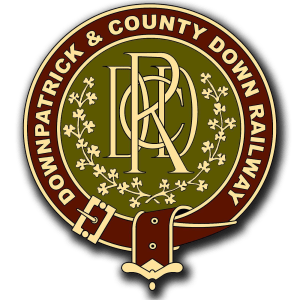| At a glance: | |
|---|---|
| Builder: | Metropolitan Railway Carriage & Wagon Company (Birmingham) |
| Build date: | 1905 |
| Original company: | Belfast & County Down Railway |
| Withdrawal date: | 1959 |
| Final company: | Ulster Transport Authority |
| Arrived at DCDR: | 1985 |
| Current status: | Museum display |
| Current owner: | DCDR |
72 was built as railmotor No. 2 by the Metropolitan Railway Carriage & Wagon Company of Birmingham in 1905, having been ordered by the BCDR the previous year. It had a small 0-4-0T steam engine permanently attached which could be driven from a small cab at the far end of the carriage. The idea was that this sped up turn-around times at the end of the train’s journey as the locomotive did not have to run around the carriage and be turned on a turntable. In turn, it was hoped that this would enable a frequent, rapid service between Belfast and Holywood which would prevent the Belfast Corporation Tramway from extending its network into the BCDR’s territory.
Two of these ‘railmotors’ were built initially to a cost of £5000 each – equivalent to £600,000 in 2019 – with a third following in 1907. They operated in a similar fashion to the trams they were designed to compete with, with tickets collected and issued on-board and frequent stops at closely-spaced halts. Though originally intended for Holywood services, hence 72’s nickname ‘The Holywood Railmotor’, they also found employ on the mainline as far as Dundonald. At their peak they ran 27 trains a day between Belfast’s Queen’s Quay station and Holywood, every 30 minutes. To put this into perspective, this is the same off-peak frequency for trains to and from Holywood even today!
The locomotive portions of the railmotors were overworked by the traffic effects of the First World War however, and were removed from the carriages in 1918. At this point, railmotors evolved into autotrains, retaining their cabs and being placed at the end of normal trains. The linkage for the controls was extended under multiple carriages and the BCDR’s conventional locomotives were adapted for this purpose, meaning that the train could still be driven from either end to avoid running around at termini, and the flexibility and capacity of the trains could be increased.
In 1943, No. 2 was involved in the filming of, “A letter from Ulster,” at Cultra station – its first foray onto the silver screen and certainly far from its last. Autotrain services meanwhile had been extended from Holywood and Dundonald to Craigavad and Knock respectively. This arrangement came to an end altogether in 1945 however, when their involvement in a devastating crash at Ballymacarrett caused 22 deaths and the end of the autotrain system. After this, the three former railmotors became conventional hauled carriages, passing into UTA ownership in 1950 and being withdrawn by them in 1959. Following the end of autotrain services, No. 2 was renumbered as No. 72.
Shortly after withdrawal, 72 was put up for auction by the UTA and ended up on a farm in Gilford. It had been used as accommodation – crudely known as a ‘Granny flat’ – and so although the internals were in good shape, there was one major setback when we acquired it for preservation in 1985: it had been cut in half! It wasn’t until 1991 that the two halves were reunited on an underframe, with full restoration commencing in earnest in 2007.
72’s overhaul was finally completed in 2014, complete with leather seating, replacement gas lamps, and blinds on the windows. The icing on the cake, however, is that 72 is fully equipped once again for autotrain functionality, and to this end one of our steam locos, No. 1, has been adapted to work with it. We have successfully ran the pair in autotrain mode from Inch Abbey to Downpatrick, something we hope to do again soon once we are able to turn No. 1 around.
72’s first passenger run since 1959 took place behind No. 1 in September 2018 as part of the European Heritage Open Days event, along with fellow restored vintage carriages GSWR 836 and BCDR 148. This was the first time a complete ‘vintage rake’ had been used at DCDR and needless to say we are immensely proud of all three vehicles. Though they normally live in the Carriage Gallery to keep them safe and dry, they are used for special events and filming contracts, most recently in October 2018 when 72 had a starring role in Channel 5’s ‘Agatha and the Truth of Murder’.
In February 2019, 72 won first prize at the Heritage Railway Association’s annual awards, known as the ‘Oscars of the railway world’. With a national award under its belt, it’s safe to say the Holywood Railmotor is living proof that even the most hopeless-looking of railway wrecks aren’t beyond saving.
